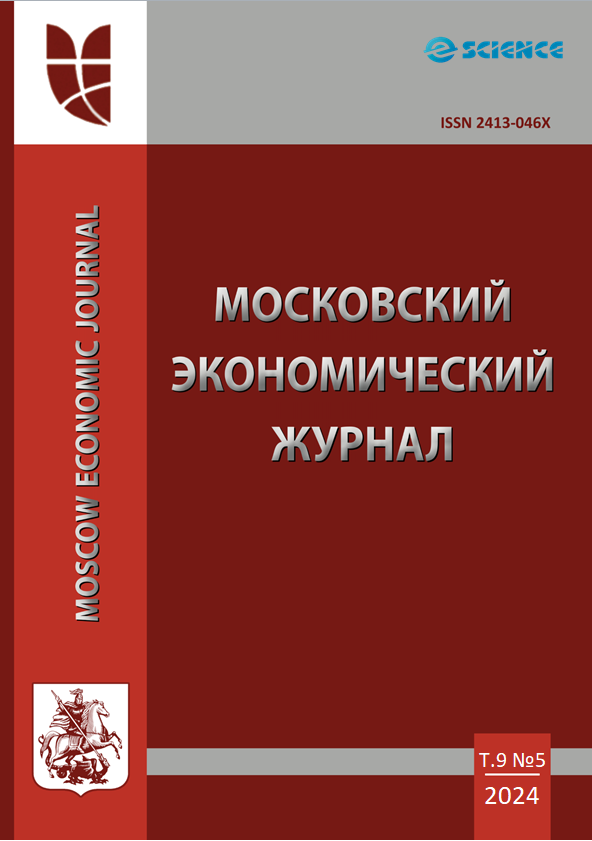Federal State Budgetary Institution National Medical Research Center for Obstetrics, Gynecology and Perinatology named after. IN AND. Kulakov Ministry of Health of the Russian Federation (Advisor to the Director)
UDC 334
This article characterizes the macroeconomic indicators potentially determining the success of public-private partnerships; it argues that the mechanism of this partnership makes it possible to implement large-scale infrastructure projects with minimal budgetary investments; such partnerships are examined using specific examples implemented in Russia; it is substantiated that in cooperation with PPP the state receives a ready-made project with minimal investments, and the saved funds can be used for other needs; it is concluded that the absolutisation of factors that give advantages in the implementation of PPP projects does not lead to the necessary level of efficiency; despite all the massive advertising at the level of PPP operators who solve the problem of placing the resources provided to them - this is largely due to the fact that the ability to achieve effective project performance is realized in a stable institutional environment, rather than in a better but dynamically developing one.
public-private partnership, investments, budgetary investments, efficiency, contracts, macroeconomic environment, money, legislative factors
1. Avakov V.V., Grigor'eva O.G., Kamolov S.G. Upravlenie gosudarstvennymi zakupkami v Rossii. M.. KnoRus. 2022. 334 s.
2. Averkieva E.S. Gosudarstvenno-chastnoe partnerstvo kak institut stimulirovaniya predprinimatel'skoy deyatel'nosti // Journal of Economic Regulation (Voprosy regulirovaniya ekonomiki). 2017. T. 8. № 1. S. 117-130.
3. Barceva G., Fomina M., Galaktionova A., Yakunina E. Investicii v infrastrukturu: Rynok proektov v krizis. 2020. Analiticheskiy obzor. InfraOne Research. [Elektronnyy resurs]. Rezhim dostupa: https://infraoneresearch.ru/u5usp7/m2r3k2?ysclid=lr2e9fpfb296458144.
4. Zav'yalova E.B., Tkachenko M.V. Problemy i perspektivy primeneniya mehanizmov gosudarstvenno-chastnogo partnerstva v otraslyah social'noy sfery // Vestnik Rossiyskogo universiteta druzhby narodov. Seriya: Ekonomika. 2018. T. 26. №. 1. S. 61-75.
5. Kiselev I. A. Gosudarstvenno-chastnoe partnerstvo v Rossii kak novyy vid perspektivnyh vzaimootnosheniy // Molodoy uchenyy. 2022. № 14 (409). S. 173-176.
6. Lybaneva M.V. Gosudarstvenno-chastnoe partnerstvo v sfere obrazovatel'nyh uslug v usloviyah modernizacii vysshey shkoly v Rossii: avtoref. dis. kand. ekon. nauk. SPb. 2017. 21 s.
7. Ofsetnye kontrakty kak mehanizm privlecheniya investiciy [Elektronnyy resurs] Rezhim dostupa: https://www.youandpartners.ru/upload/me-dialibrary/899/Analiticheskiy_otchet_Ofsetnye-kontrakty-kak-mekhanizm-privlecheniya-investitsiy_You-_-Partners_21072021.pdf
8. Seleznev P.L. Gosudarstvenno-chastnoe partnerstvo i ego effektivnost' v institucional'nyh preobrazovaniyah ekonomiki: avtoref. dis. ... kand. ekon. nauk. M. 2009. 26 s.
9. Susanyan K.G. Rol' ofsetnyh sdelok v mirovoy i rossiyskoy vneshney torgovle // Rossiyskiy vneshneekonomicheskiy vestnik. 2013. № 2. S. 63-69.
10. Aben T.A., Van der Valk V., Rerih Dzh.K., Sel'viaridis K. Upravlenie informacionnoy asimmetriey v gosudarstvenno–chastnyh otnosheniyah, perezhivayuschih cifrovuyu transformaciyu: rol' kontraktnogo i relyacionnogo upravleniya // Mezhdunarodnyy zhurnal operacionnogo i proizvodstvennogo menedzhmenta. 2021. T. 41. № 7. R. 1145-1191 .
11. Firmino S. Vazhneyshie faktory uspeha gosudarstvenno-chastnogo partnerstva: politicheskie i institucional'nye aspekty // Obzor obschestvennogo upravleniya. 2018. № 52(6). S. 1270-1281.
12. Yung H. Finansy razvitiya, smeshannoe finansirovanie i strahovanie // Mezhdunarodnaya torgovlya, politika i razvitie. 2020. T. 4. №1. S. 47-60.











